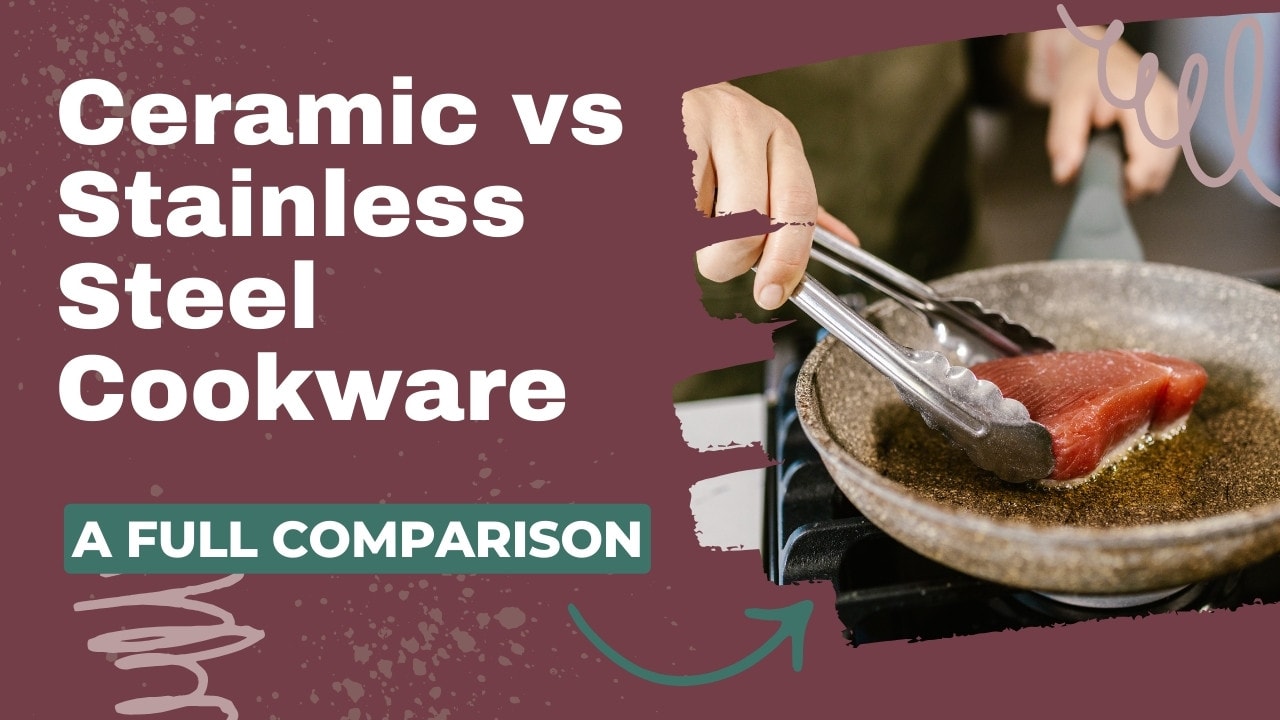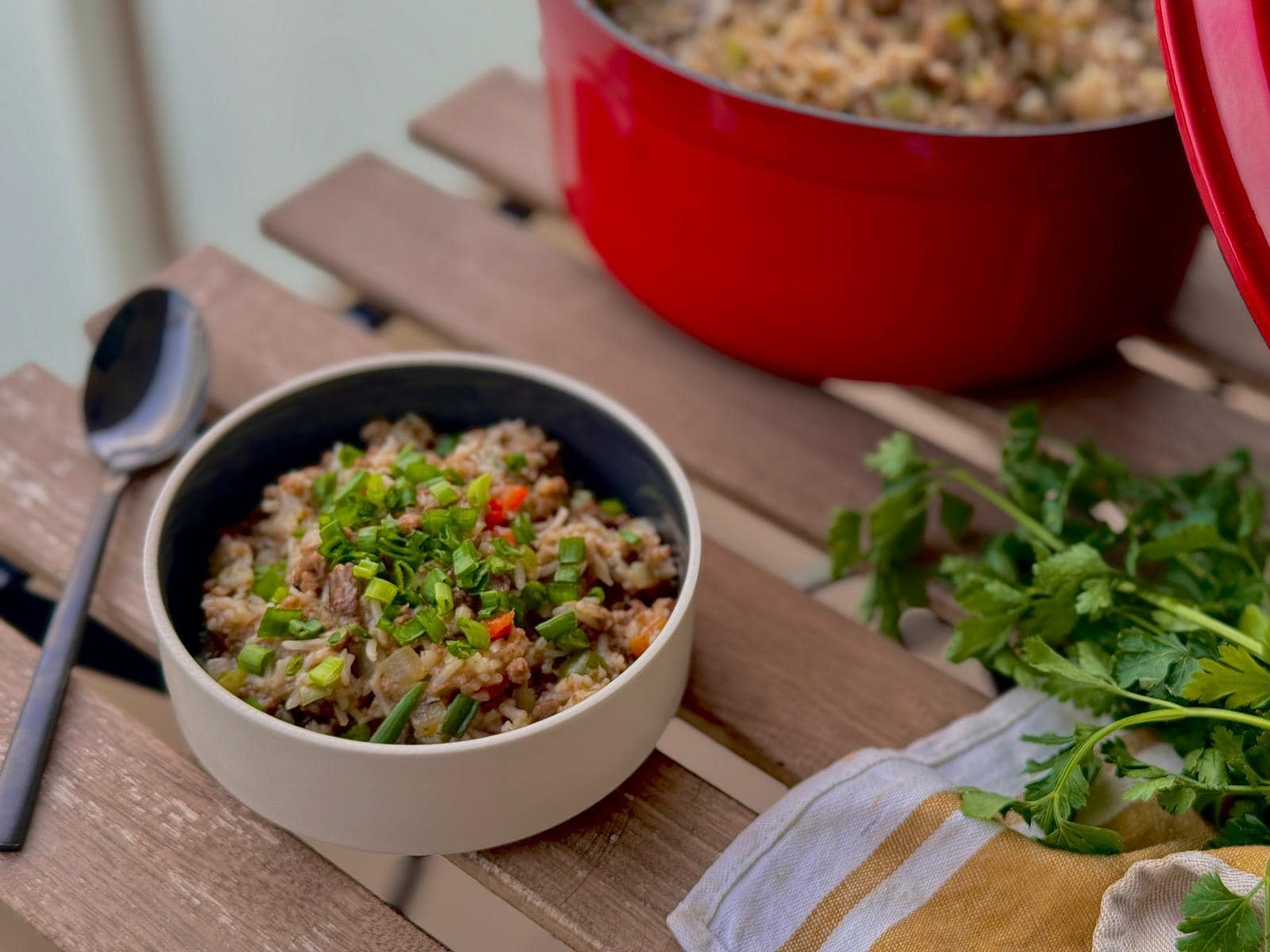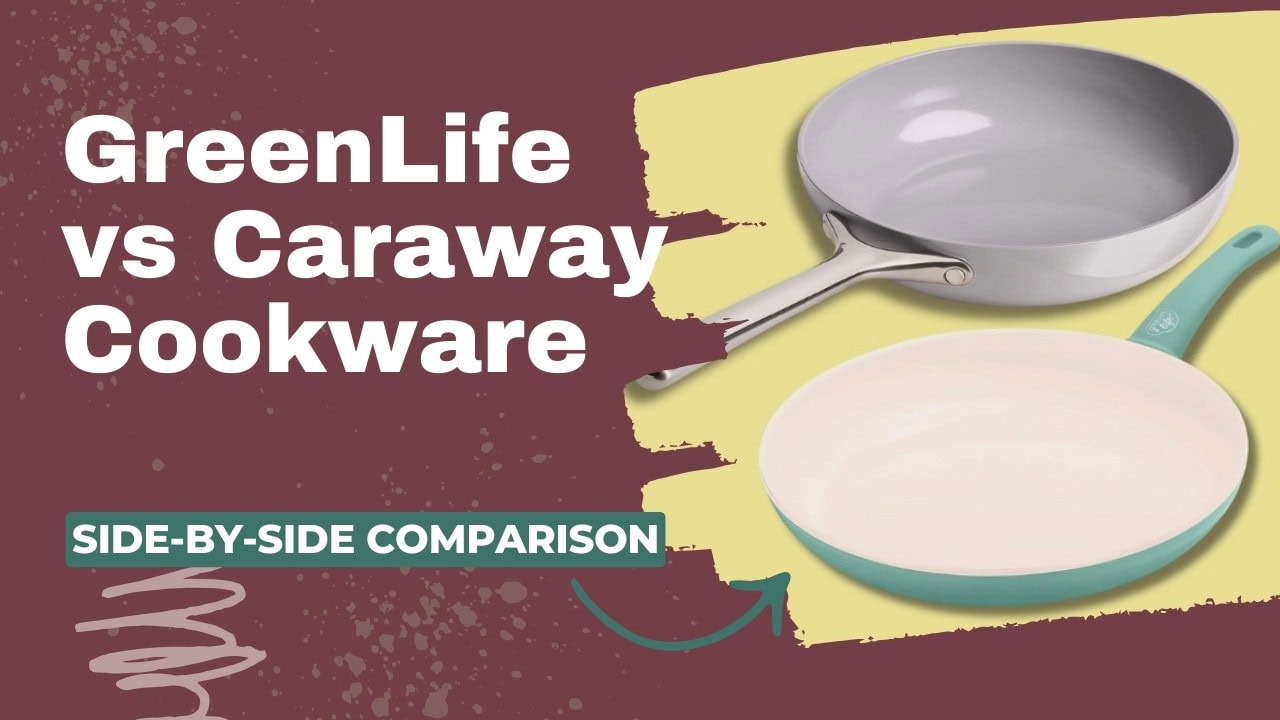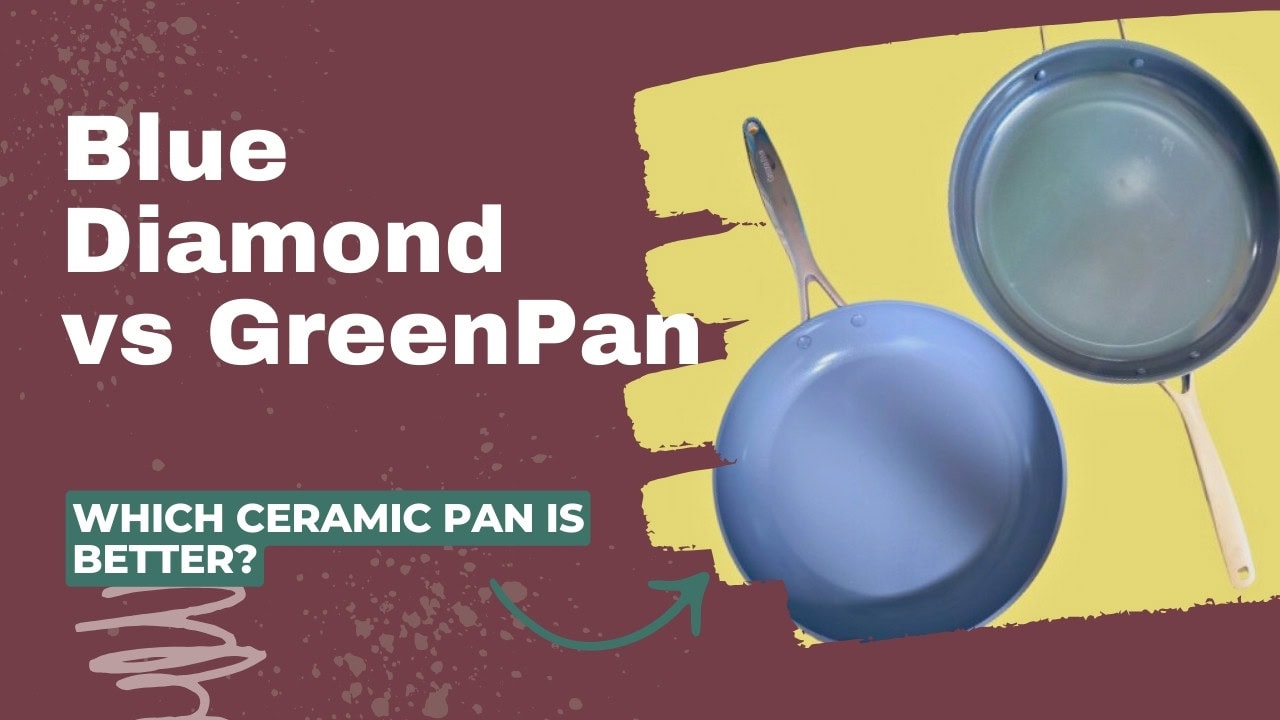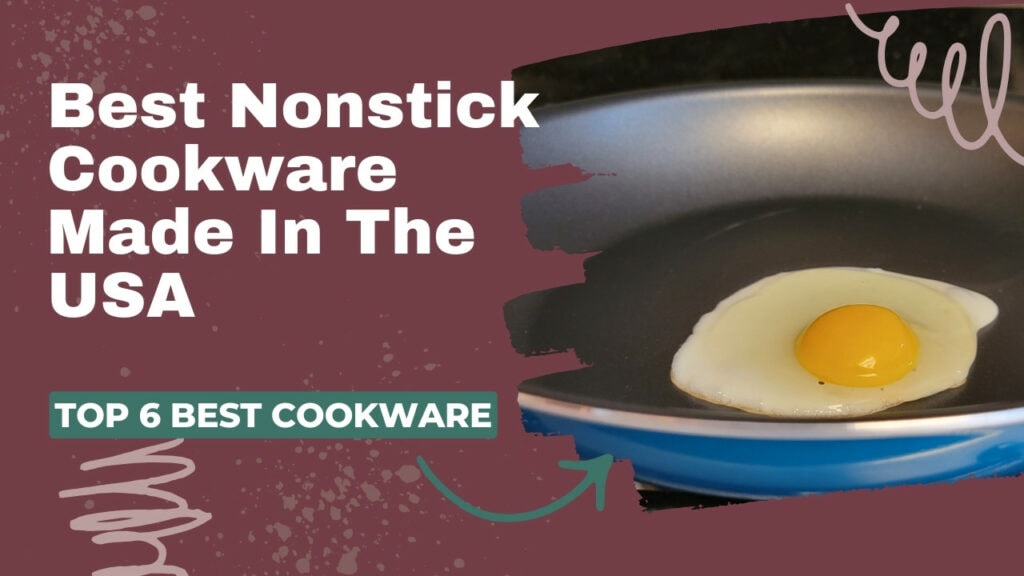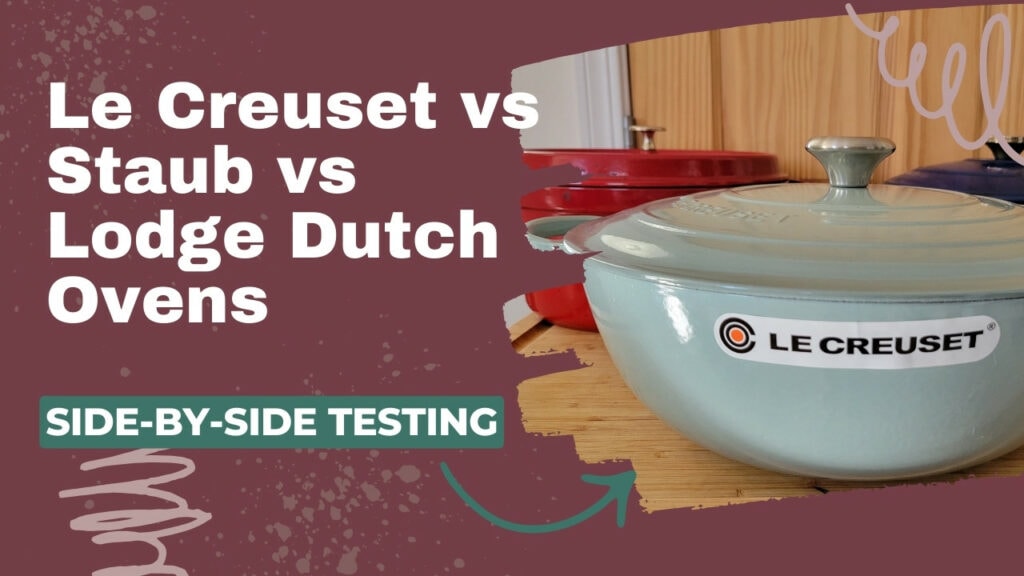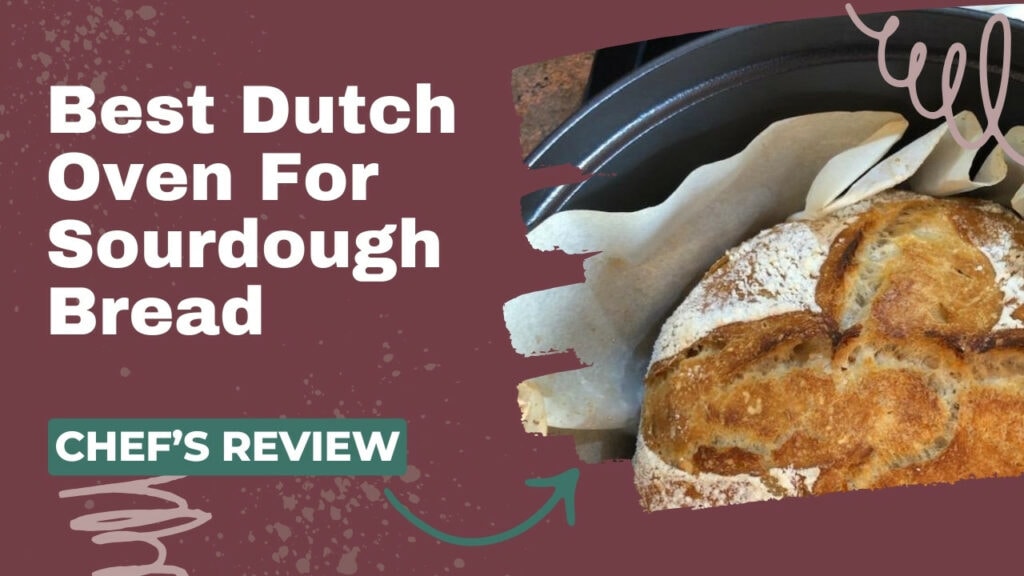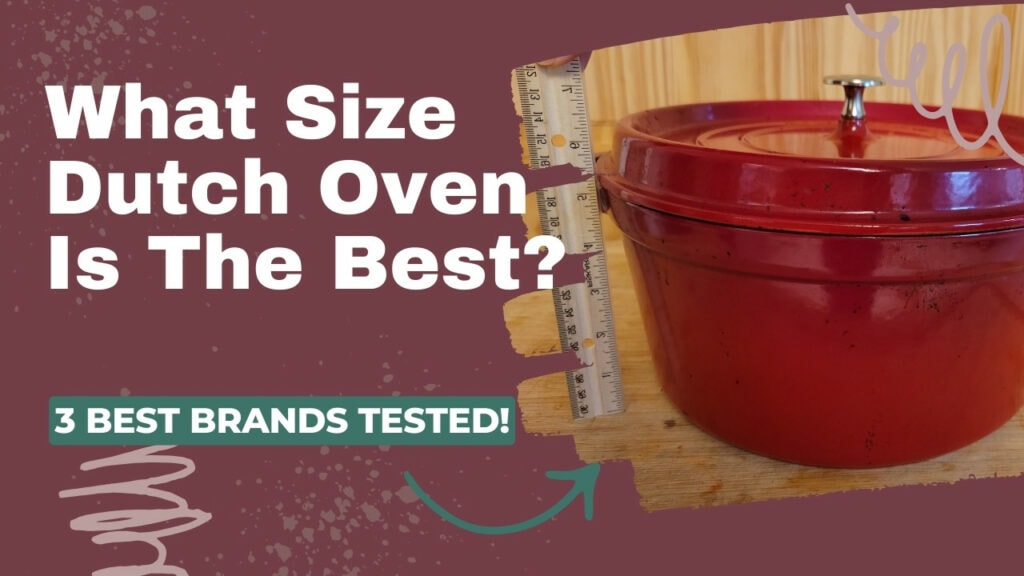Ceramic and stainless steel cookware handle completely differently and are made of totally different materials. But they have one thing in common: they are the two most commonly recommended types of “healthy” cookware.
Whether your quest for non-toxic cookware brought you to this page, or you’re researching ceramic vs stainless steel cookware for some other reason, we’ll take a detailed look at 15 differences between these two popular types of pots and pans.
In this list we’ll compare the pros and cons, durability, ease of use, ease of cleaning and maintenance, and cooking performance – as well as the safety – of both materials.
What is ceramic cookware?
In this article, we are talking about “nonstick” ceramic-coated cookware. Ceramic cookware is a metal pan (usually aluminum) with a ceramic coating derived from silicon dioxide. Popular ceramic cookware brands include GreenPan, Blue Diamond, and Caraway. This should not be confused with stoneware, earthenware, or 100% ceramic cookware, which is made of clay and fired in a kiln.
Ceramic vs Stainless Steel Pans: What’s The Difference?
Ceramic and stainless steel are great options – but they have totally different uses. Stainless steel is durable, versatile, and can handle high-heat cooking. But it’s not non-stick.
Ceramic cookware is susceptible to damage and has a lower heat tolerance. But its nonstick surface makes cooking super easy.
Stainless Steel vs. Ceramic Pans – Pros and Cons
| Stainless Steel Pan | Ceramic Pan | |
|---|---|---|
| Price: | 💰💰 to 💰💰💰💰 | 💰 to 💰💰💰 |
| Materials: | Stainless steel with copper or aluminum | Aluminum with silicon dioxide-derived coating |
| Nonstick: | Only at high heat | Yes |
| Heat Tolerance: | High, oven safe | Low – Medium |
| Applications: | Versatile | Used for delicate cooking |
| Durability: | High | Low |
| Longevity: | Lifetime | 2-5 years |
| Safety: | Considered safe except for those with nickel allergies | Regarded as generally nontoxic |
| Dishwasher Safe: | Yes | No |
| Induction Compatible: | Usually | Sometimes |
| Metal Utensil Safe: | Yes | No |
15 Differences between Ceramic and Stainless Steel Pans
1. Materials
The main difference between ceramic and stainless steel cookware is that ceramic is coated, whereas stainless steel cookware is not coated.
In some products, stainless steel forms the base for a ceramic-coated pan; but aluminum is a much more common substrate material. In this article, I’m using “stainless steel” to mean uncoated stainless steel.
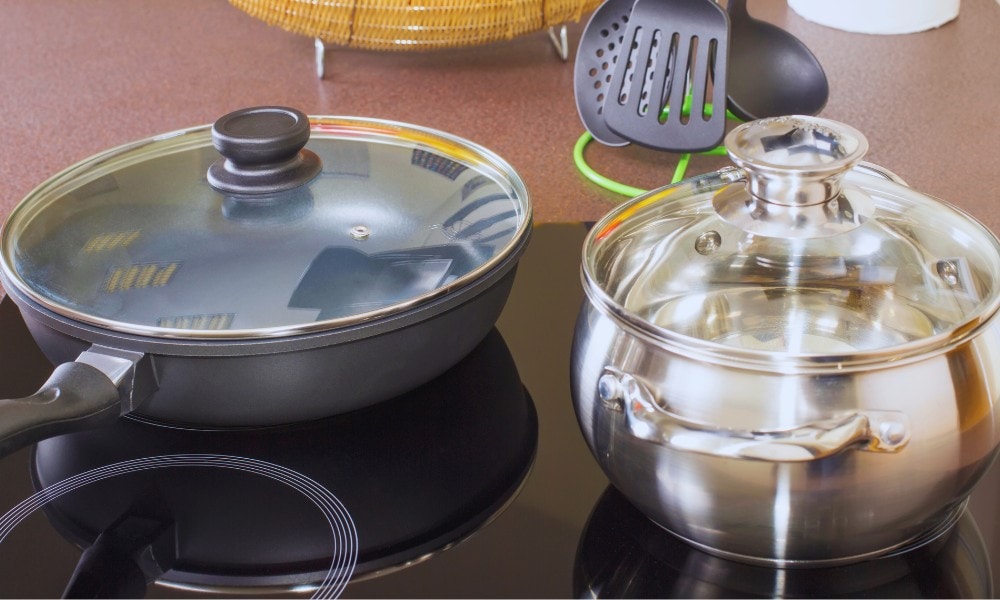
What is Ceramic Cookware Made of?
Ceramic cookware refers to an aluminum, hard anodized aluminum, or stainless steel pan with a coating made from a process called “sol-gel” that uses sand-derived materials. This coating results in a nonstick glass-like “ceramic” surface.
Manufacturers layer this sol-gel coating material on their pans. To make their brand stand out, many add other finely ground elements like diamond, granite, or titanium. Ceramic cookware does not contain synthetic polymers like PTFE (Teflon) or “forever chemicals” like PFOA. (In fact, no cookware sold in the US has contained PFOA since 2015…but that’s another discussion.)
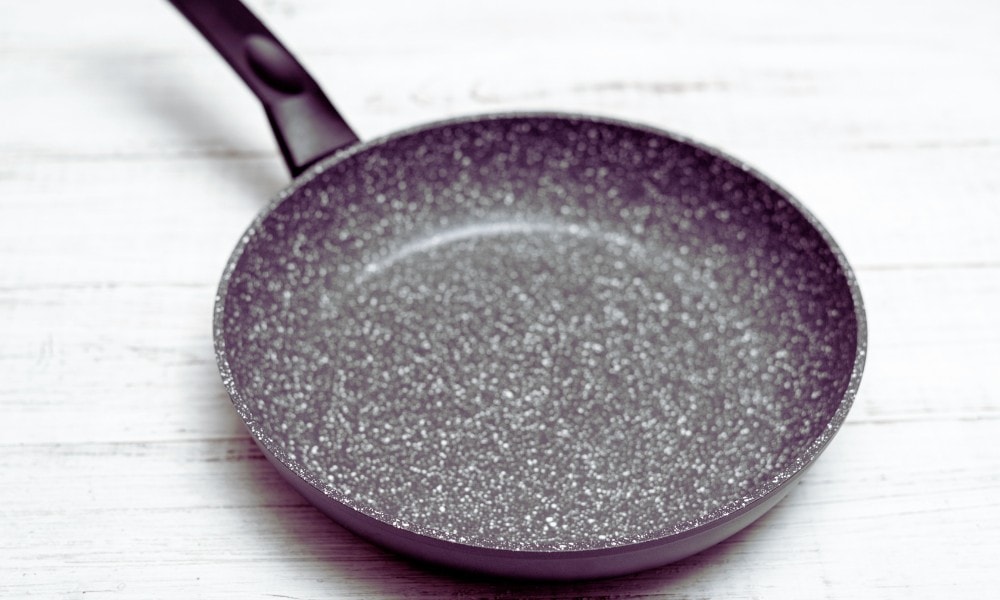
Stainless Steel
Stainless steel cookware is made of a metal alloy. The alloy components are usually iron, chromium, and nickel. The ratios that you’ll see in stainless steel grades refer to the percentages of each metal. The highest grade, 18/10 (18% chromium, 10% nickel), is corrosion and rust-proof. 18/0 stainless steel is nickel-free; manufacturers often use it as the exterior layer of their stainless steel pans to make them induction-compatible.
“Fully clad” or “3-ply” are terms you’ll see in stainless steel cookware. Cladded stainless steel pans have a copper or aluminum core fused together with stainless steel layers on the interior and exterior. In contrast, impact-bonded stainless steel cookware means it has a heavy plate of aluminum fixed to the base.
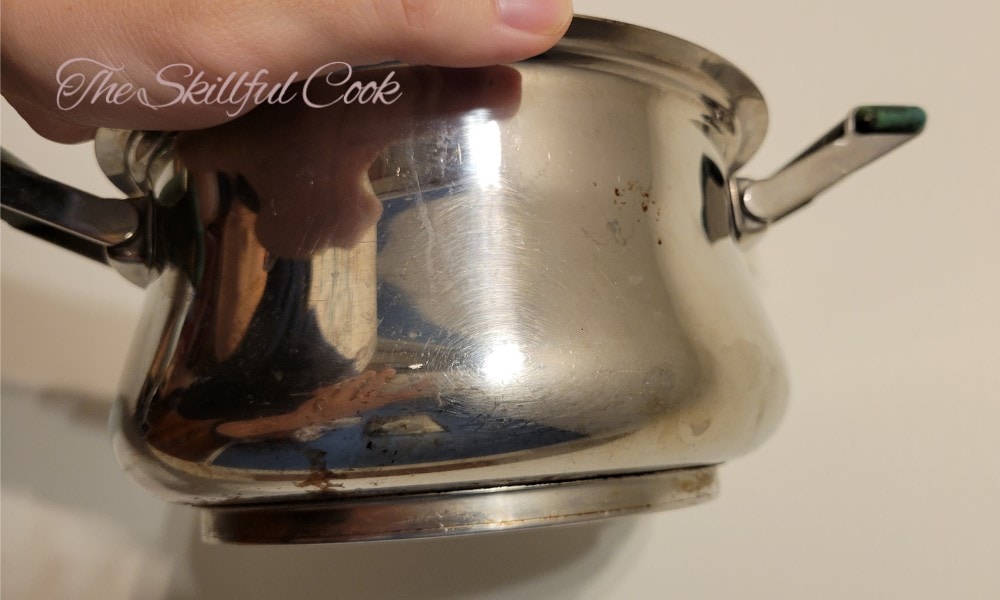
Stainless steel cookware needs a layer of aluminum or copper to make it heat up evenly. This aluminum or copper layer does not come in contact with your food. Stainless steel cookware is also free of PFOA, PFAS, PTFE, etc.
2. Heat Tolerance
Stainless steel has very high heat tolerance, which means you can sear a steak on the stovetop and then pop it in the oven to finish. Ceramic pans aren’t designed to be used on high heat like this. You shouldn’t reach for a ceramic pan if you’re planning to stir fry, sear, or cook something in the oven – even if the manufacturers say you can.
High heat will break the ceramic coating down faster than if you use it on medium or low. Thankfully, a ceramic pan’s aluminum core heats up fast, so only medium to low heat is needed when cooking with them.

So, this is not a case of whether one type of pan is better than the other! It’s a case of using the right pan for the style of cooking they were designed to do. Both stainless steel and ceramic cookware are great to use, but they have different ideal applications.
3. Nonstick Ability
Ceramic is designed to be nonstick – and most ceramic pans work almost as well as traditional Teflon pans for the first year or so. But the coating is more delicate, prone to scratching, so you may have to replace your pan every few years. Since it’s nonstick, you can cook with less oil and at lower heat than in a stainless steel pan, which means it’s better for delicate proteins like eggs and fish.
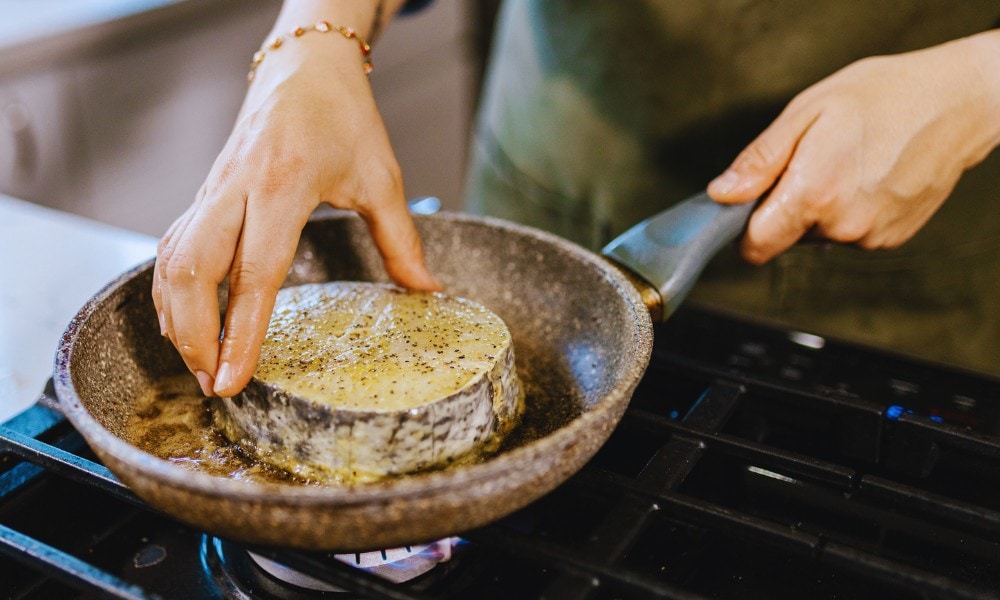
Stainless steel, when used at the right temperature, can be made nonstick! You also have the option of seasoning your stainless steel pan to make it more nonstick. The downside is that stainless steel needs to be very hot to avoid food sticking to it.
4. Ease of Use
Ceramic is a great fit for those just starting the journey of becoming a cook. Being lighter, easier to handle and clean, and nonstick, it’s so simple to use: basically, heat your pan and cook.
Of course, if you enjoy the taste of a little butter–because I mean, who doesn’t–by all means, add some butter – but it cooks well with very little oil. Just don’t overheat any cooking oils or use cooking spray, because they leave a residue to your pan that will make the food stick. You can also damage the coating trying to scrub this residue off.
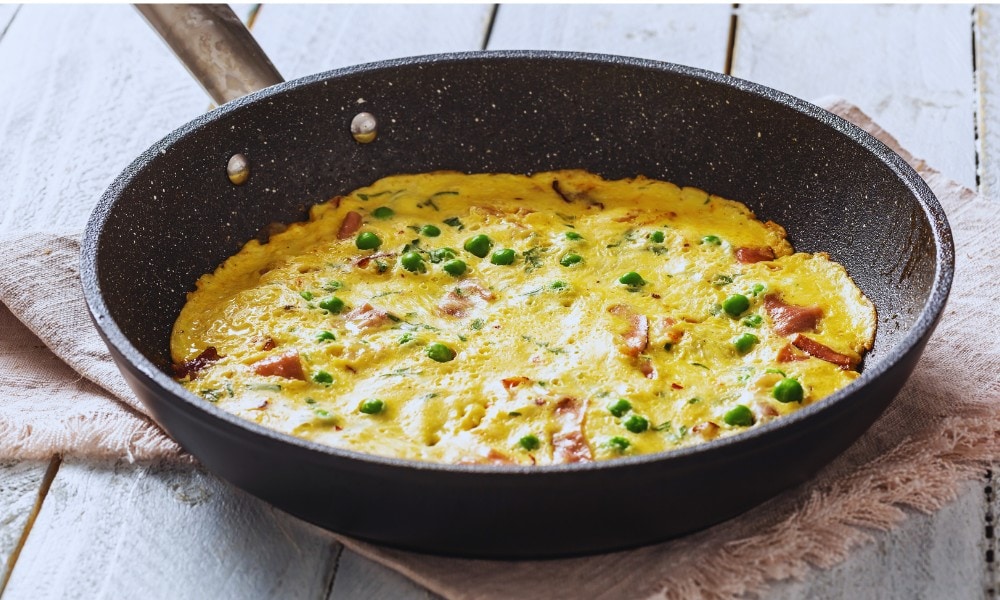
Stainless steel has a bit more of a learning curve to it. But, once mastered, stainless steel will deliver you a lifetime of amazing meals.
5. Applications
Ceramic cookware is great for people who are looking to cook with less fat or none at all, as food will lift off the nonstick surface. Ceramic cookware is also compatible with all stovetops and easy to clean, which is a time saver. It’s great for things you want to cook over lower heat, like when caramelizing onions or making soft scrambled eggs.
Ceramic pans may be induction compatible if they have a plate of stainless steel set into the base; check the product info to tell for sure.
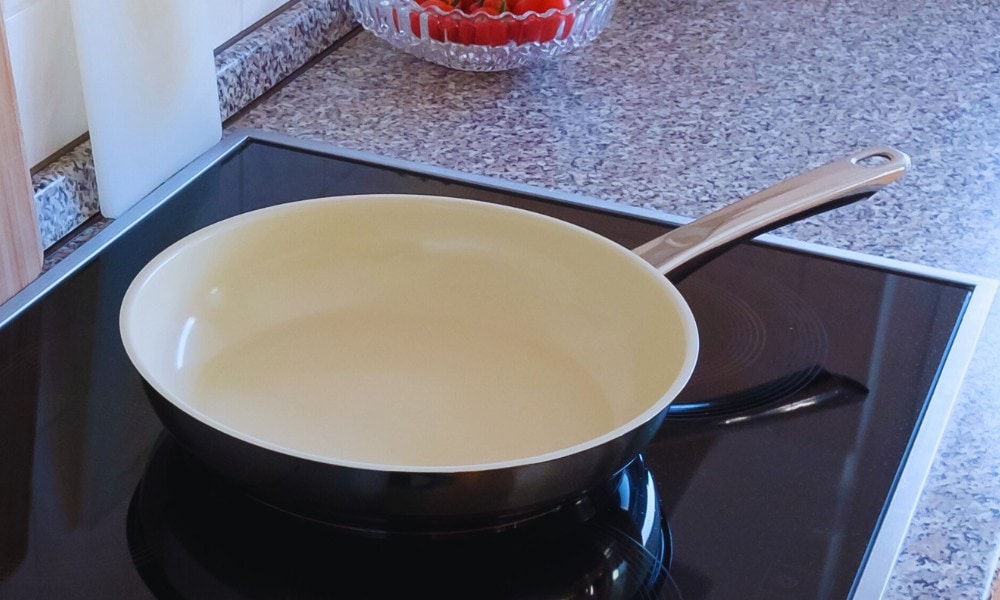
To be nonstick, stainless steel needs to get super hot before you add your cooking oil and start to cook. Stainless steel’s excellent heat retention means you get an even cooking temperature across the bottom of your pan, if you have well-made cookware. You can make an omelet on stainless steel, but you can also use it to sear a stack of ribs before finishing them in the oven.
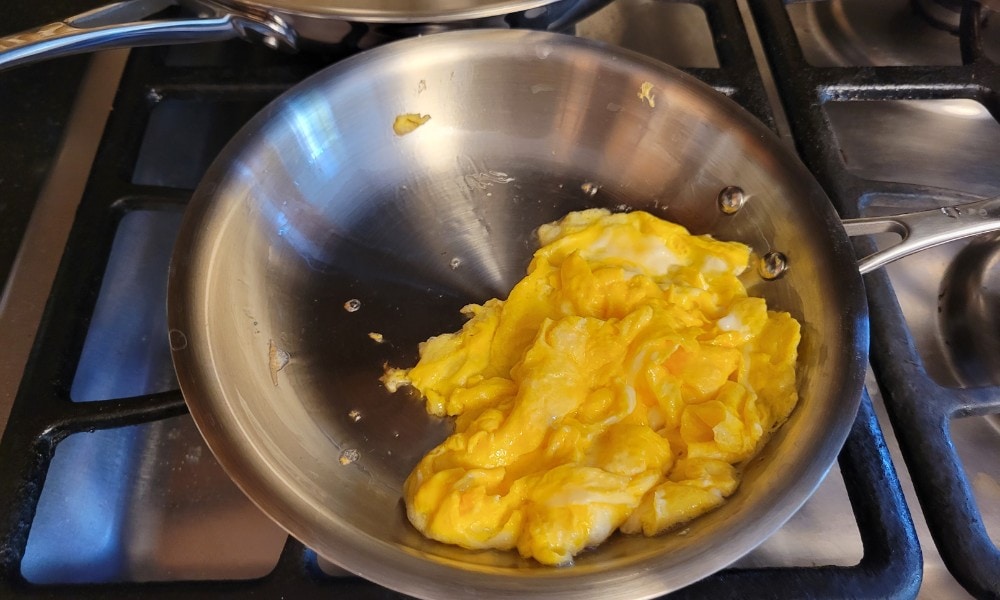
6. Use in Home and Professional Kitchens
Stainless steel is the top cookware choice of chefs worldwide. It is often used in professional kitchens because of its versatility, durability, and longevity; it can handle the intense cooking that a restaurant chef demands.
Ceramic’s more delicate coating is easier to damage, so it is not designed for professional kitchens. It is good for gentle home use where things aren’t as hectic.
7. Cleaning
Ceramic is very easy to clean, which is one of its biggest selling points. If no cooking oil was used, cleaning is as simple as wiping the pan with a damp cloth before putting it away. If cooking oil was used then just wash in warm, soapy water, dry, and store.
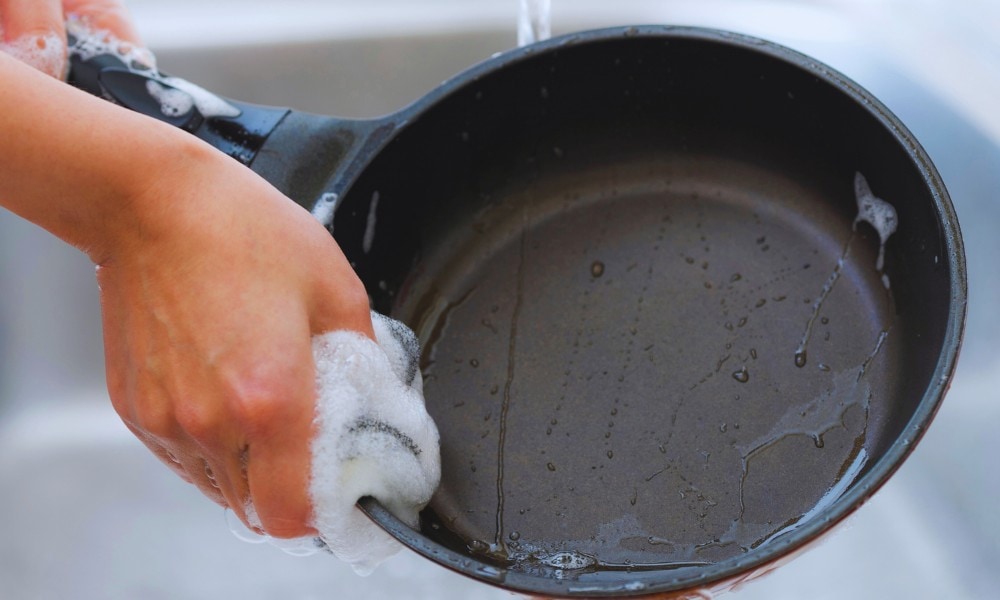
Stainless steel needs a little more TLC. Always let the pan cool off before washing in warm, soapy water. If a deeper clean is needed due to burnt-on food or oils, discoloration, or food residues, then equal parts white vinegar and water will do the trick. Always make sure it is thoroughly dry before storing.
8. Care
Caring for ceramic cookware means being gentle. Don’t throw other pots and pans on top of it or chipping, scratching, and denting can occur. Use pan protectors if stacking your pots so that the surface won’t be (visibly or invisibly) scratched. Using ceramic gently will extend its lifespan.
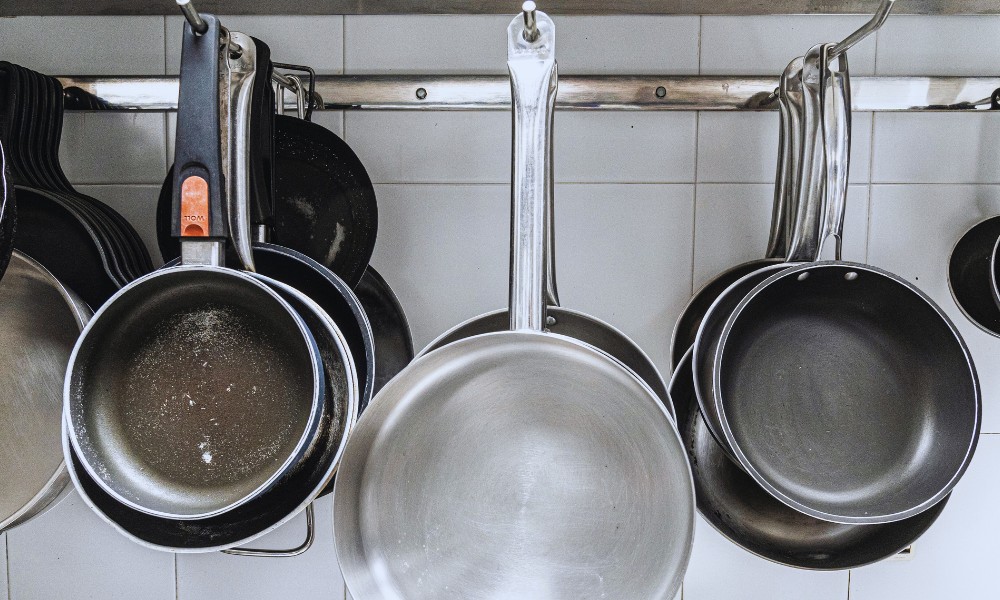
Careful handling is also important for maintaining your stainless steel cookware and avoiding dents or loose handles. Stainless steel does not need seasoning like other metal cookware (such as carbon steel or cast iron) so it is fairly low-maintenance. The hardest part about caring for stainless steel cookware is scrubbing off residue that surprised you and stuck to the pan.
9. Utensil and Dishwasher Use
When cooking on ceramic, always use silicone or nylon utensils to avoid scratching the coating. Once scratched, it loses its nonstick properties and food residues build more easily. While many manufacturers say you can put ceramic cookware in the dishwasher, if you read the fine print, they all recommend hand washing to preserve the coating.
Stainless steel is a little more forgiving. You can use metal utensils along with wood or other kinds on stainless steel cookware. It is also less prone to denting, scratching, and chipping along with being corrosion and rust-resistant – so you can place it in the dishwasher.
10. Longevity
Most ceramic coatings only carry a warranty for two years. Once the coating is scratched, chipped or damaged in any way, chances are you’ll need to replace the pan.
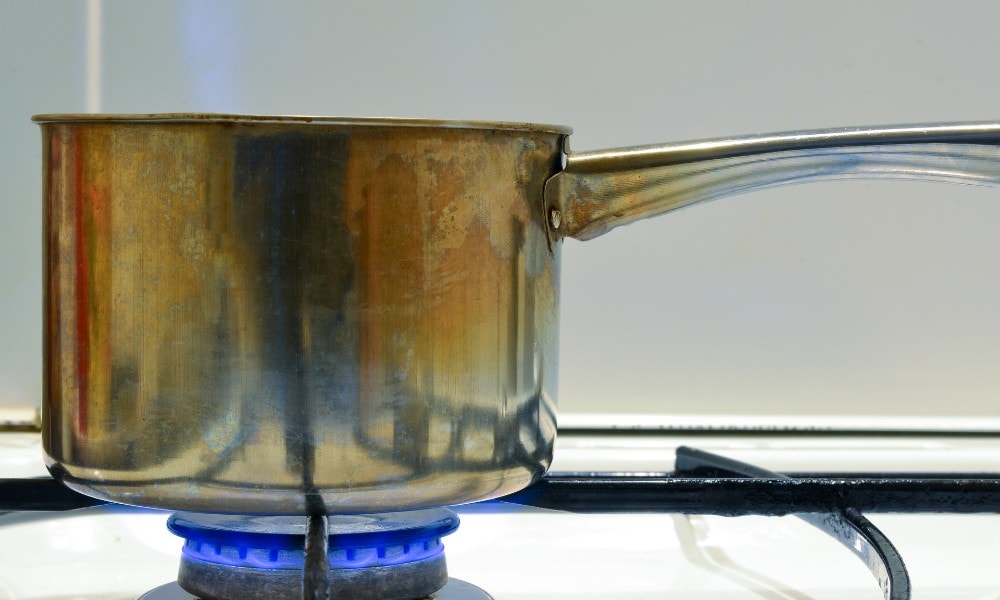
Stainless steel cookware (especially high quality 18/10 grade) usually has a lifetime limited warranty. Incredibly durable, if cooked with and looked after correctly, it will last a lifetime. I’m not kidding; my mother passed her good stainless steel cookware down to me and she bought it back in the late 60s!
11. New Technology vs Time Tested.
Evidence of ceramic cookware (made solely from clay) dates back 20,000 years. But ceramic coatings were only invented in the 1950s, and only became widely available as cookware coatings in the 2000s. Ceramic coatings quickly became as popular as traditional nonstick pans.
Studies are still needed on the long-term safety of ceramic cookware, many consider it to be safer than polymer (Teflon) coatings. Still, more time and research is needed to both improve the performance and confirm the safety of ceramic coatings.
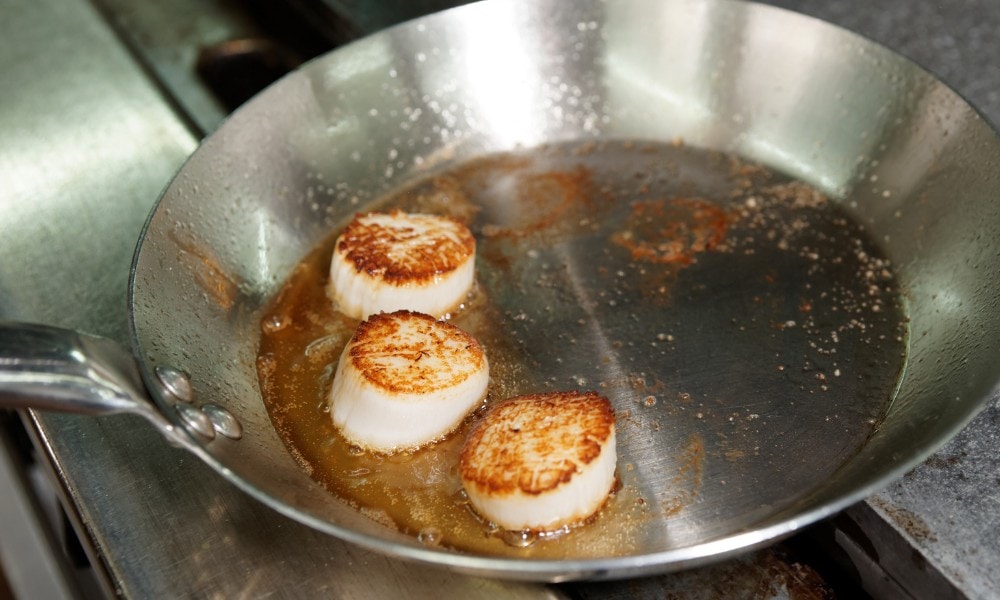
Stainless steel cookware has been used since 1913. It’s confirmed to be generally safe to use and is one of the least reactive metals used in cookware.
12. Health, Safety, and Environmental Concerns.
Most experts consider stainless steel the safest, healthiest, and most environmentally friendly cookware on the market due to its longevity, durability, and nonreactive qualities.
Ceramic-coated cookware is often considered safer and more environmentally-friendly than polymer-coated pans. This is because ceramic cookware has a more natural silica-based coating, rather than one made with “forever” chemicals.
However, some companies that make ceramic cookware have been accused of greenwashing and of making unproven claims about their energy consumption.
In truth, manufacturing ceramic-coated cookware is still a highly industrial process that results in a non-recyclable product that only lasts a few years before it lands in the garbage. The truly eco-friendly choice may be stainless steel cookware that lasts for decades.
I also want to make sure to mention the rising concern about titanium nanoparticles used in some ceramic coatings. If you would like to avoid this altogether, I recommend Xtrema 100% ceramic cookware.
13. Style and Aesthetics
Ceramic cookware is beautiful. It comes in a wide range of colors and patterns that jazz up your kitchen. With a countertop stand, or hanging on the wall, can add to the decor as well as be a dream to cook with.
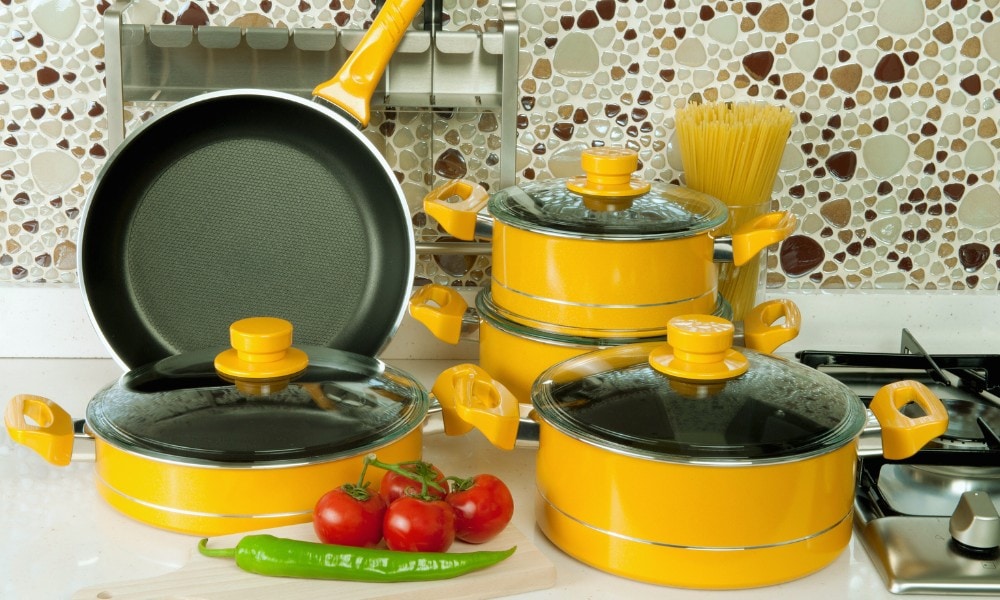
Stainless steel’s shiny silver is classic, adding a sense of timelessness to your kitchen. But it takes some elbow grease to maintain this finish.
14. Price
You can find both ceramic cookware and stainless steel cookware for every budget. To give you an idea, a good ceramic coated pan like Sensarte Nonstick Frying Pan (8-inch) and the Cuisinart’s 8-Inch Chef’s Classic Stainless Steel Pan are within a couple of dollars of each other.
There are good budget stainless steel sets for those just starting out, or who don’t cook enough to warrant the expense. The same goes for ceramic cookware.
For those looking for a ‘forever’ set of good quality stainless steel cookware, check out brands like All Clad or Made In. These sets could cost you several hundred dollars, but it’s an investment in your future. Top brands of ceramic cookware sets like Greenpan will see you investing over five hundred dollars.
15. Worth
Choosing the right cookware for your family is a personal choice and comes down to your preferences, cooking style, frequency, expertise, and taste.
Both ceramic and stainless steel cookware are great choices in cookware. So you need to decide if your frequency of use and cooking style justifies the expense of investing in both kinds, so you have maximum versatility in your kitchen.
Conclusion
Ceramic vs stainless steel cookware – neither is wholesale better but both have their pros and cons. Do you want a “forever set” of fabulous 5-ply stainless steel cookware that you can pass to your grandchildren? Or are you looking for a no-nonsense ceramic pan to fry up eggs in the morning? The choice is yours.

